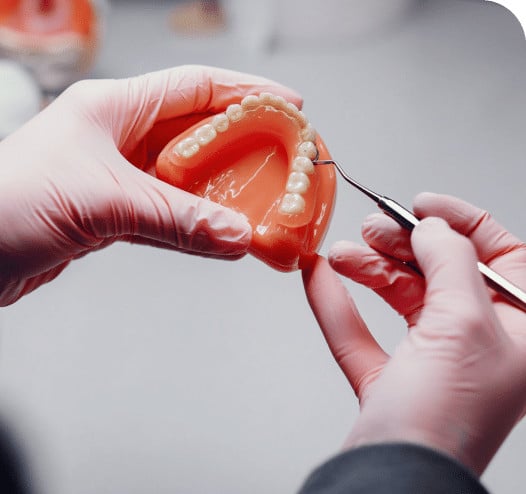Menu
As much as we try to take care of our dental health, tooth loss happens. Dentists have mastered the art of replacing lost teeth & their toolkits are full of solutions to fit your specific needs.

The most common kind of dental bridge is called a traditional bridge. This is a pontic tooth attached to two dental crowns that will cover the adjacent teeth. In order to fit the crowns over the other teeth, the dentist needs to file them down. The crowns (sometimes called abutments) are placed over your reshaped teeth & secured with a composite bonding resin.
A cantilever bridge is similar to a traditional bridge, but the pontic only attaches to one abutment instead of two. Because it is only secured on one side, this bridge is mostly used for teeth in the very back of your mouth.
The last kind of bridge is called a Maryland bridge. Instead of using crowns to secure the pontic, a Maryland bridge uses metal or porcelain bands that attach to nearby teeth with bonding resin. The main benefit of this method is that none of your teeth need to be filed down. The downside is that they are weaker than a traditional bridge & may not be suitable to replace molars, which put a lot more strain on the bridge when chewing.
Once any necessary treatment is complete, the dentist will remove enamel from the supporting teeth to make room for the abutment crowns.
They will make a mould of the area & send it to a lab that will craft your own personalized bridge. This normally takes a few weeks.
While you wait for your custom restoration, you will be given a temporary bridge.
At the final appointment, the dentist will place your permanent bridge & make any necessary adjustments.
"*" indicates required fields
At Grand Village Dental, it’s the mission of our caring team to provide the highest level of convenience & personalized care for your entire family.